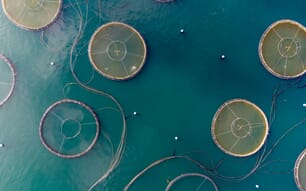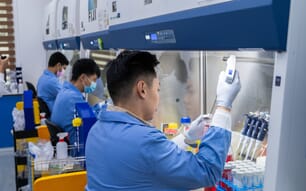
© Tanika Pietila, Pexels
Finnish hyperspectral satellite and AI-powered insights company Kuva Space is launching a pilot with the Finnish Environment Institute (Syke) to test the use of hyperspectral satellite data and AI-driven insights in improving the monitoring and identification of harmful algae blooms (HABs) in Finland’s lakes and coastal waters. This collaboration builds on Syke’s existing use of public satellite data and manual field testing, adding more detailed spectral information to help target environmental measures and recovery actions where they are needed most.
The vast network of lakes, rivers, and coastal waters presents a major monitoring challenge for Finland. During the summer, cyanobacteria observations are gathered from nearly 400 sites. Cyanobacteria can emerge suddenly, spread widely and produce harmful toxins posing risks to both humans and animals, making timely detection critical.
Syke aims to improve nationwide monitoring of inland and coastal waters to detect HABs and their associated species with greater speed and precision. However, most existing satellite missions fall short, lacking the spatial resolution and rapid data delivery needed to accurately track bloom concentrations, identify toxic species and issue timely warnings at scale.
Syke and Kuva Space are developing advanced AI models using hyperspectral data, water samples and biochemical research to improve cyanobacteria monitoring. Syke’s extensive data will help train reliable, scalable tools for tracking blooms and their environmental drivers.
“We’re very excited about this pilot with Kuva Space because rather than just detecting the presence of algae, we can use Kuva’s hyperspectral technology and AI to explore the spectral range and take a step further in identifying which algae species are present and assessing their biomass. In the long run, we can also follow how restoration efforts are impacting water quality across Finland’s many small lakes and complex coastal areas,” said Jenni Attila, leading researcher at the Finnish Environment Institute, in a press release.
Continuous, high-spectral resolution data improve the modelling of water quality trends and help predict when and where HABs are likely to occur. By filling gaps left by traditional sampling, hyperspectral monitoring strengthens regulatory reporting, supports ecosystem management and guides smarter policy decisions.
“This public-private collaboration is a notable advancement in environmental monitoring capabilities, particularly for inland water quality, where large-scale, high-frequency coverage remains scarce. By 2027, Kuva Space's hyperspectral monitoring with daily revisit rates will provide commercial and public sector stakeholders in aquaculture and water resource management with continuous, actionable insights, enhancing operational planning, regulatory compliance, and sustainability outcomes at an unprecedented scale,” added Jarkko Antila, chief executive officer of Kuva Space.
According to Kuva space, Finland is leading the way in using satellite data for environmental monitoring, with insights helping assess over 4,000 lakes and nearly all coastal areas. Syke is working to expand these efforts under EU regulations, aiming for more accurate and cost-effective restoration measures. Kuva Space supports this with its new hyperspectral satellites – Hyperfield-1A and the recently launched Hyperfield-1B – forming part of a growing constellation set to deliver daily global monitoring by 2027.


